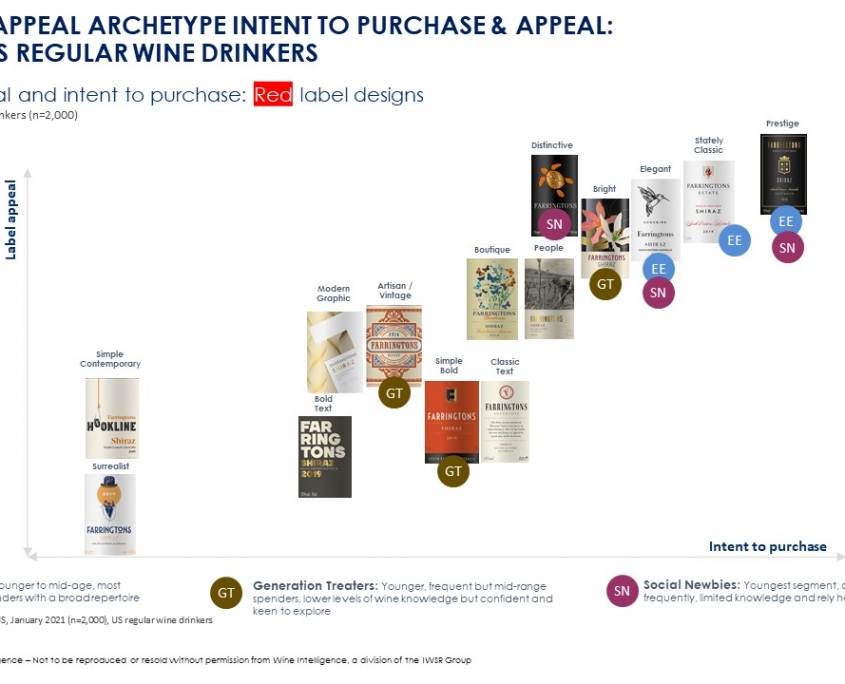When focusing on our target wine consumers, we often default to one of two archetypes – a younger, hip, urban dweller, typically holding down some kind of digital or creative job or, an educated, high earning, well respected, thoughtful and adventurous consumer, drawing pleasure from building and demonstrating their wine knowledge.
It is true that such consumers do exist, yet for most wine brands, and especially those operating at scale, this vision can be idealised.
“In most markets, the reality is also that these consumers may not be as knowledgeable about, or engaged with wine as we would like to think. As such, our wine drinkers, of all types, often need reassurance and familiarity cues known as markers of centrality, balanced with a level of distinctiveness,” comments Lulie Halstead, CEO Wine Intelligence. “Finding the balance between these two is therefore one of the hardest challenges when it comes to wine label design,” she adds.
Amongst US regular wine drinkers for example, label designs that deliver centrality cues drive higher purchase intent according to the Wine Intelligence US wine label classification.
Whilst there are clear overall market patterns in terms of label appeal and intent to purchase amongst US regular wine drinkers, Generation Treaters – younger, confident, frequent drinkers but mid-range spenders with lower levels of wine knowledge – have a higher purchase intent of wine labels that move away from centrality towards distinctiveness. However, the segment that’s youngest and newest to wine, Social Newbies, rely more heavily on centrality and classic wine cues to deliver the required levels of reassurance as they begin their wine journey.

If you would like to test the impact and effectiveness of your wine label versus current designs or against market competitors, the next wave of Wine Intelligence Vinitrac® global is fielding in October 2021. Read more here. Vinitrac®, the Wine Intelligence global wine drinkers survey platform, enables wine businesses to measure the impact of label changes or indeed new brand designs and benchmark against markets norms.
You may also be interested in reading:

Leave a Reply
Want to join the discussion?Feel free to contribute!